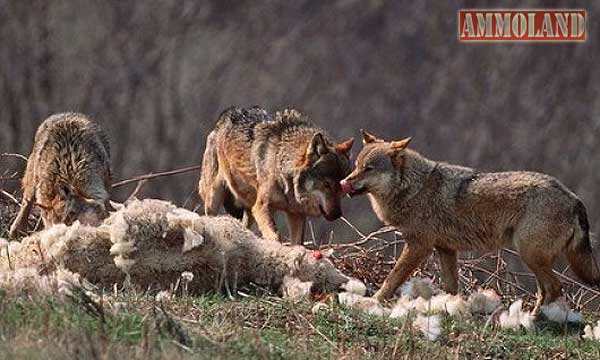

OLYMPIA –-(Ammoland.com)- For the past year, wildlife biologists at the Washington Department of Fish and Wildlife (WDFW) have been preparing for the summer grazing season when wolves are most likely to encounter livestock in eastern Washington.
Stationed from Okanogan to the Blue Mountains, a team of “wildlife conflict” specialists has been working with ranchers to help them protect their livestock, while field biologists capture and fit wolves with radio-collars to improve state monitoring efforts.
That work will continue even as ranchers move more cattle, sheep, and other livestock into summer grazing areas.
Washington Department of Fish and Wildlife (WDFW) Director Jim Unsworth, hired to lead the department in January after 30 years as a wildlife manager in Idaho, believes these proactive measures will play an important role in reducing conflicts with wolves in the months ahead.
“Wolves can certainly pose a risk to livestock, and we’re committed to reducing those risks as much possible,” Unsworth said. “Over the past year, we’ve helped dozens of ranchers take measures to protect their animals, and many more have done so on their own.”
Since 2013, WDFW has offered cost-sharing arrangements to livestock producers who invest in non-lethal deterrents such as range riders, guard dogs, “fladry”(fencing), and carcass disposal. During the past year, WDFW signed 41 cooperative agreements with ranchers, committing more than $300,000 in financial assistance to help them adopt measures to protect their livestock.
Other conflict-prevention strategies employed by WDFW in the past year include:
- Range riders: WDFW contracted with five range riders that state wildlife managers could deploy to help ranchers monitor their livestock, remove sick and injured animals and haze wolves away from active grazing areas. In addition, all livestock owners with cooperative agreements qualify for cost-sharing arrangements for range riders.
- Radio collars: State, federal and tribal biologists have captured 11 wolves and fitted them with radio collars since January. There are now 14 active collars on wolves distributed among 10 of the state’s 16 known wolf packs.
- Wildlife conflict staff: WDFW now employs 11 wildlife-conflict specialists to work with livestock producers in areas with active wolf packs. In all, there are 27 members on WDFW’s wildlife-conflict staff, including specialists working statewide on other issues, including deer and elk damage
A Wolf Conflict-Deterrence Update, which describes how proactive strategies have been applied to specific areas occupied by wolf packs, is available on WDFW’s website at http://wdfw.wa.gov/conservation/gray_wolf/livestock/deterrence_updates.html.
Prior to spring pupping season, a survey conducted by WDFW found a minimum of 68 gray wolves in Washington, up 30 percent from the previous year. The number of confirmed wolf packs also increased to 16 from 12 the year before.
As the state’s wolf population continues to rise, ranchers in eastern Washington have reported losing an increasing number of livestock to wolf predation.
On two occasions – in 2012 and 2014 – WDFW took lethal action against wolf packs involved in persistent attacks on livestock. Both actions occurred in the eastern third of the state, where wolves are no longer listed as endangered under the federal Endangered Species Act.
Still in his first year as WDFW director, Unsworth has extensive experience with wolf management from his work in Idaho, a state with nearly 10 times as many wolves as Washington.
Noting that Washington’s Wolf Conservation and Management Plan provides guidance for both lethal and non-lethal wolf-deterrence strategies, Unsworth said he plans to emphasize preventive measures to reduce conflicts with wolves.
“Washington needs to chart its own course in wolf management,” Unsworth said. “I think the proactive strategies we’ve pursued over the past year have put us on the right path and reinforced the importance of working with livestock producers to minimize conflicts with wolves.”
